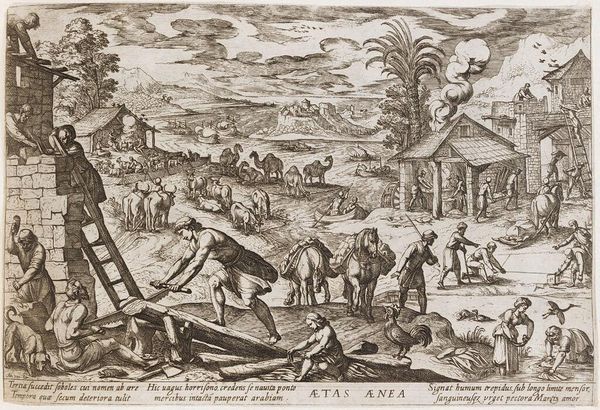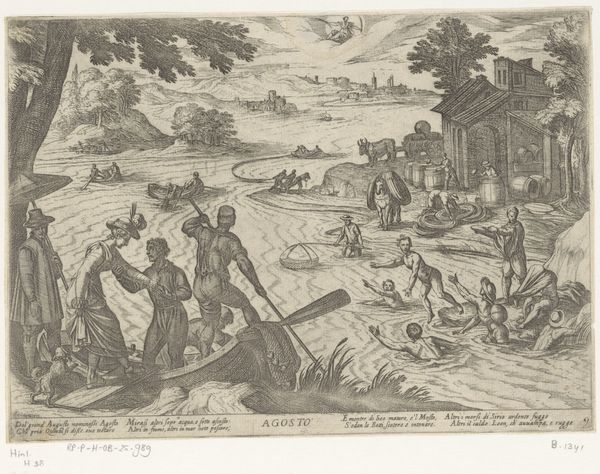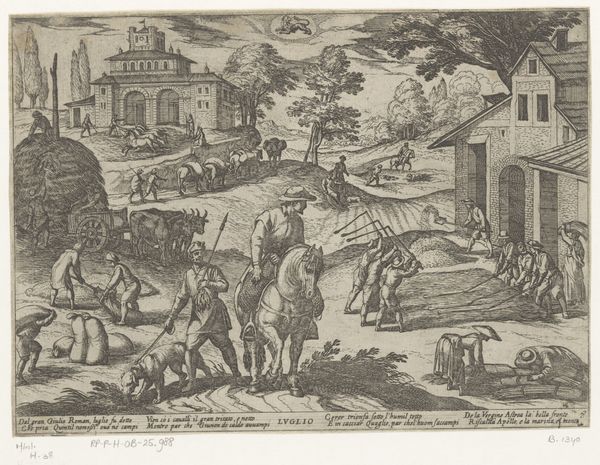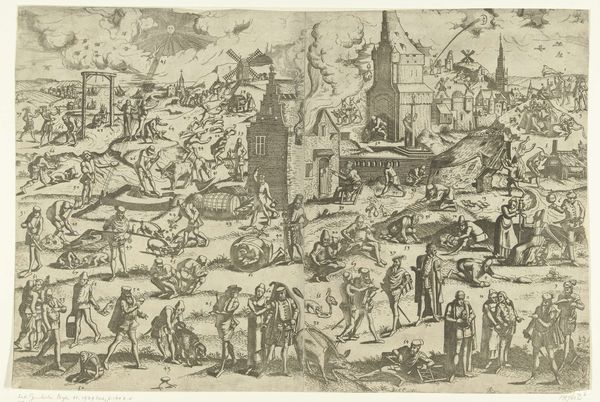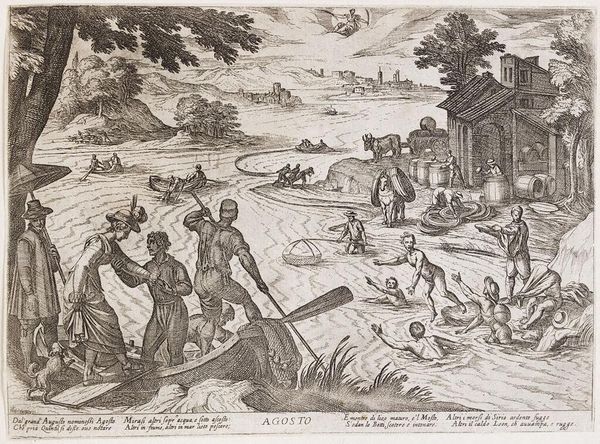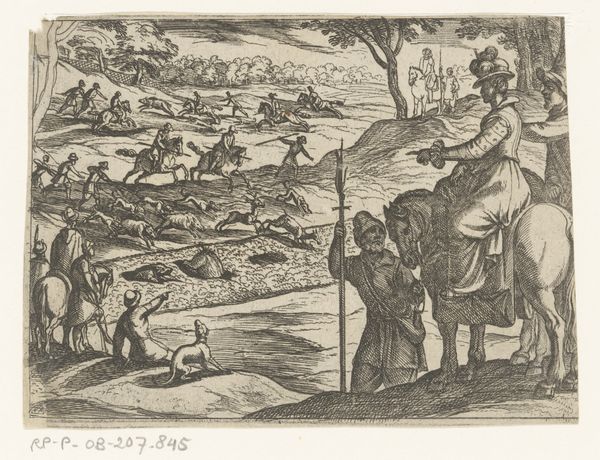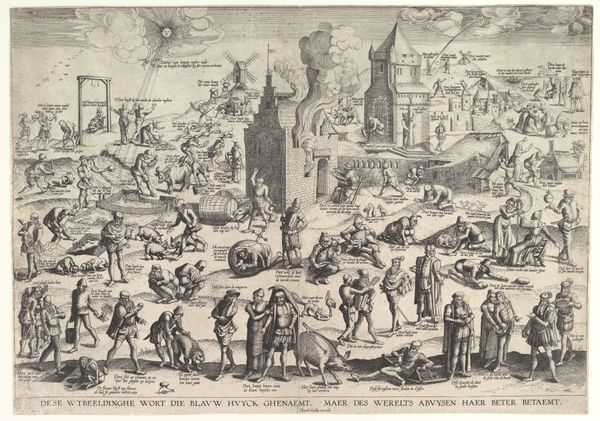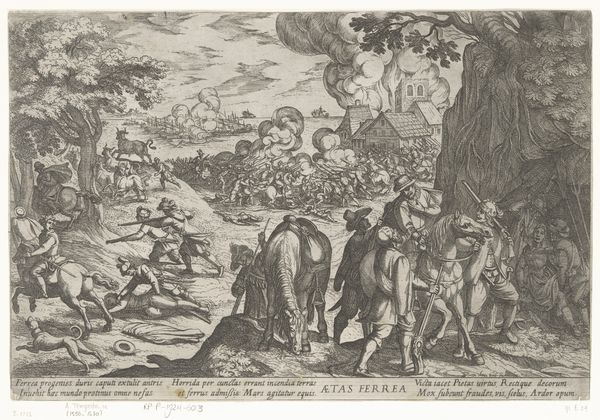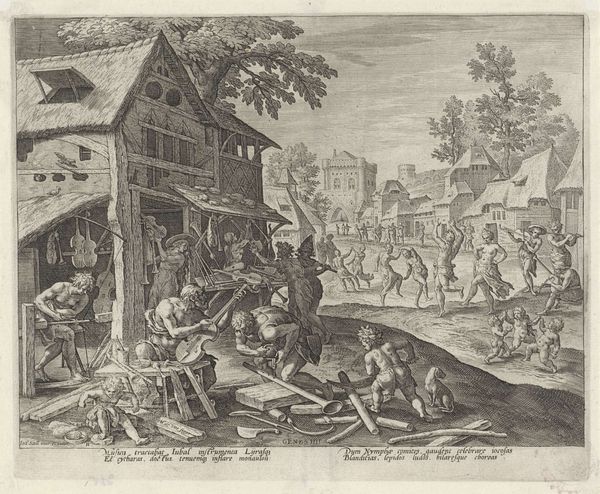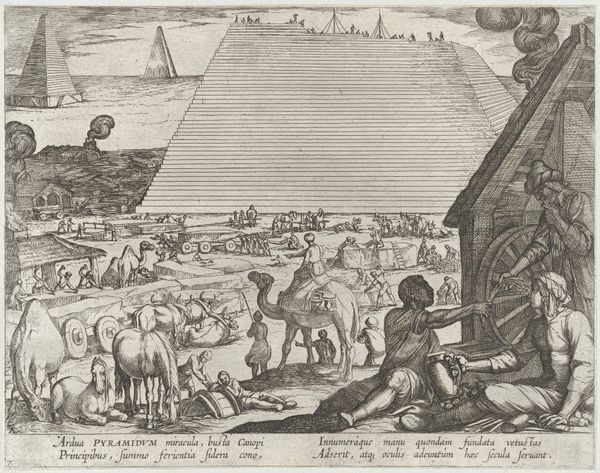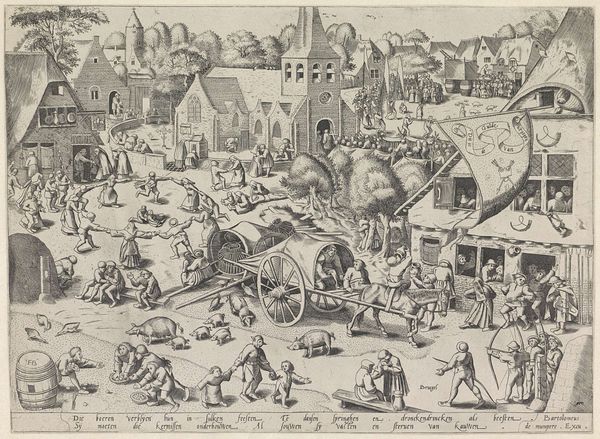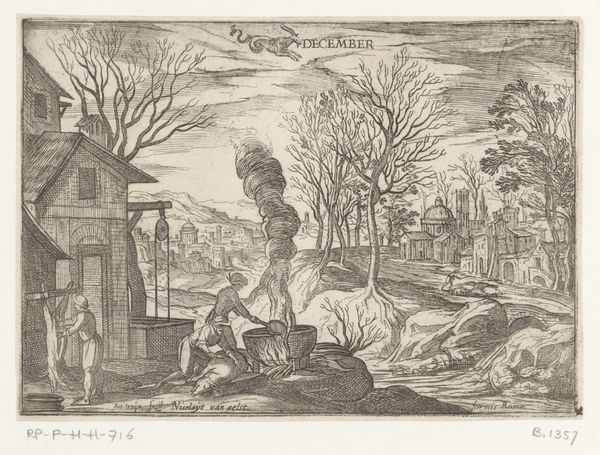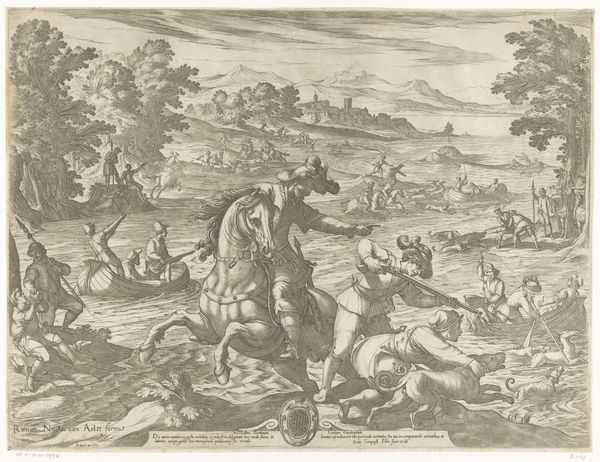
print, metal, engraving
#
narrative-art
#
pen drawing
# print
#
metal
#
pen illustration
#
pen sketch
#
landscape
#
figuration
#
11_renaissance
#
pen-ink sketch
#
line
#
pen work
#
history-painting
#
italian-renaissance
#
engraving
Dimensions: height 221 mm, width 336 mm
Copyright: Rijks Museum: Open Domain
Editor: We’re looking at "Bronzen tijdperk," or "The Bronze Age," an engraving by Antonio Tempesta from 1599, currently held at the Rijksmuseum. It's a busy scene, full of figures engaged in various activities within a landscape. It feels… illustrative, almost like a page from a storybook. What draws your eye when you look at this print? Curator: I’m immediately struck by the process of its creation. This isn’t just an image, it’s an object made through labor. The act of engraving—the physical tooling of the metal plate—is central. Look at the varied textures achieved through the artist's handling of the burin. The very act of creating this image for dissemination becomes a testament to the period’s relationship with materials and the reproduction of knowledge. Where would an image like this circulate? What is it telling us about labour? Editor: It definitely speaks to labor! I see figures building, crafting, transporting goods…It's like a record of various societal functions, like a catalogue. So you see its circulation and production as being just as crucial to its meaning? Curator: Absolutely. How was it produced, consumed, and disseminated? Consider the cost and the social circles where such an print might be appreciated. This piece serves as a historical record of both artisanal skill and the socio-economic context that allowed for its creation and distribution. Are these labors glorified? Criticized? How would an original such as this become more available to common people, and what cheaper techniques were utilized to create wider dissemination of these lessons? Editor: That makes me think about how different classes might have interacted with this imagery. Curator: Precisely! The engraving provides insight into production processes, distribution networks, and its potential engagement by various social strata. What cheaper material reproductions became available to the working class so they could share in these stories? Editor: Seeing it that way helps me understand the image on a deeper level. Thanks! Curator: My pleasure. Now go seek the evolution of such a practice - see where printed works would go in following centuries as a tool for both documentation, as well as for change and uprising.
Comments
No comments
Be the first to comment and join the conversation on the ultimate creative platform.
